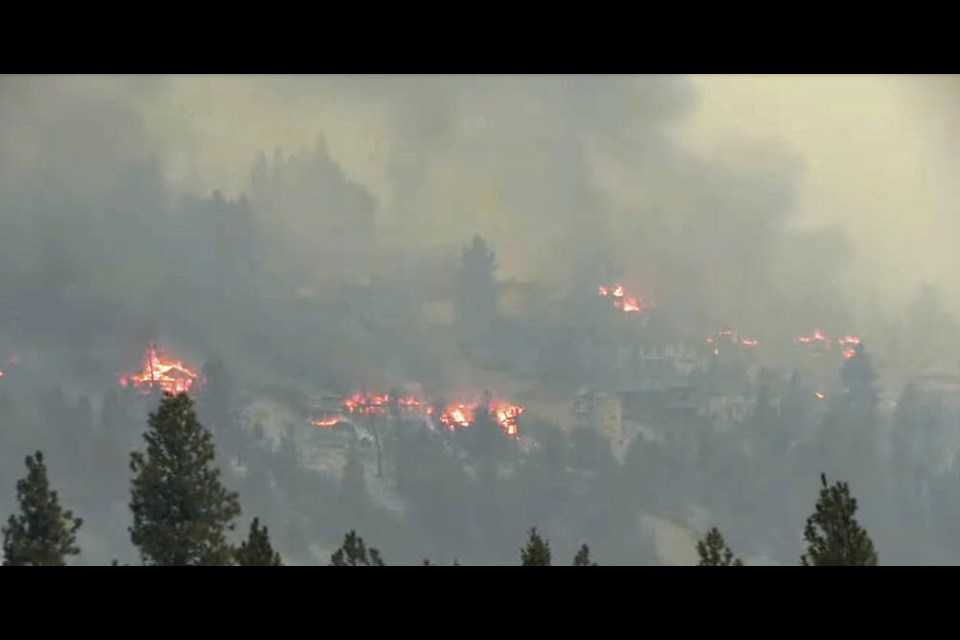KELOWNA — The “army” of firefighters battling the McDougall Creek wildfire in the streets of West Kelowna were granted a slight reprieve Friday night, but only when compared to the brutal night prior.
“We were still fighting structure fires at the same time across the community,” said West Kelowna Fire Chief Jason Brolund. “To call that a reprieve, it just boggles my mind.”
He said that while the wind died down and the fire’s glow was less dramatic, “don’t think for a second that it wasn’t totally unprecedented last night after a totally unprecedented day of firefighting yesterday.”
Those sentiments were echoed by the B.C. Wildfire Service at a news conference Saturday morning.
Jerrad Schroeder of the wildfire service said the fire’s activity was “subdued compared to the previous night” but still “significantly higher than normal.”
Schroeder said the fire spent most of Friday night burning at rank two and three (out of six) downslope in the Smith Creek and Bartley Road areas. Sixty structure protection personnel worked overnight.
He said they expected to see more warm and dry conditions Saturday, but much less windy than the past two days. Provincial crews are working on getting a more accurate map and size of the fire, which was last estimated at 10,500 hectares, but is now much larger.
Brolund said 127 structural firefighters and 41 fire trucks were working the day shift Saturday. “We are an army out there.”
Brolund said Friday was one of the most difficult days of firefighting his department has ever faced. Homes were lost, but many more were saved.
The Rose Valley Water Treatment plant, a $75 million project nearing completion, was directly threatened by the fire.
“It’s going to make an immense difference to our community when it gets turned on — and we were not going to let it burn down,” Brolund said, explaining the fire “burned over” the plant on Friday, but it was saved and undamaged.
“$10,000 worth of sprinklers and pumps that were put on that building over the last two days saved a $75 million asset,” he said.
Brolund said it is still too soon to say how many structures have been lost.
“We will start counting the number of houses when we stop fighting the fires that are burning today. Soon as we know, we’ll share the information, we will find a way to do it so that people get an official notification, and they’re able to begin to process it.”
He said they are building a dedicated task force to start to assess the destruction, but many areas are still unsafe due to downed power lines and the toxic hazards related to house fires.
“I think it’s become evident that this event is going to leave a long lasting scar on our community. But I am already seeing how our community is coming together,” Brolund said.
Brolund said he simply does not know when people in evacuation-order zones will be able to return home.
“We are working hard to get these fires out and to make it safe for the public so that you can go home as quickly as possible,” he said, noting his own family and the majority of his staff have also been evacuated.
“As soon as we can get people back safely, it will be a staged return. Not everyone will go back at the same time. But we’ll work through it together.”
He commended the coordination of municipal firefighters from across the province who joined his team and the B.C. Wildfire Service on the front lines.
He recalled crews deploying to a street where three homes were burning next to each other.
“At the same time our crews were fighting it on the ground. Their crews were flying above in helicopters dropping water on the same fire. There are unprecedented firefighting tactics that are taking place out there.”
Hundreds of homes have been saved by the work of the firefighters, he said.
>>> To comment on this article, write a letter to the editor: [email protected]



